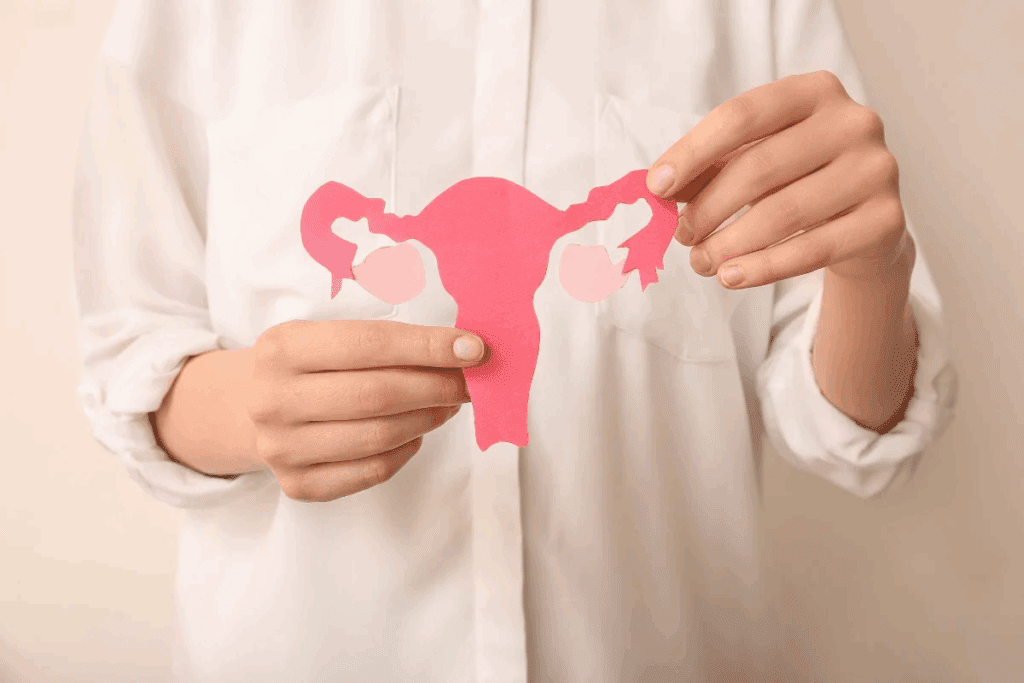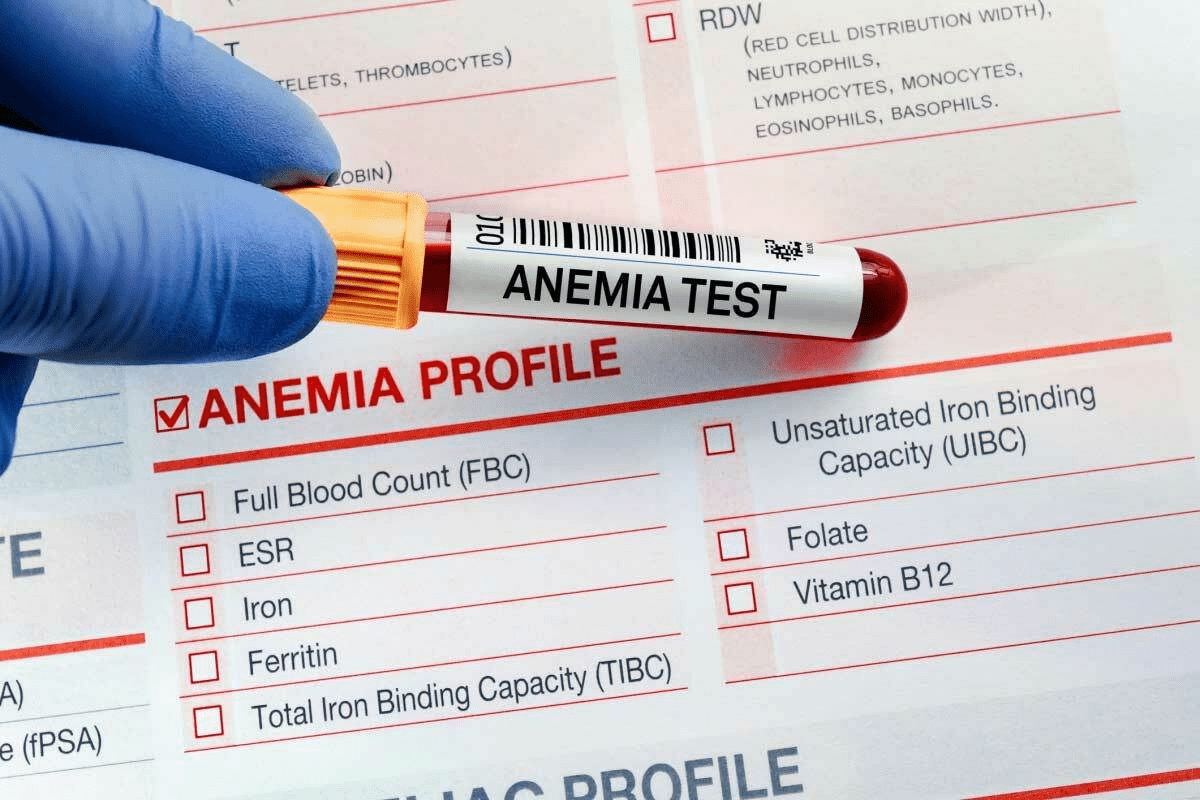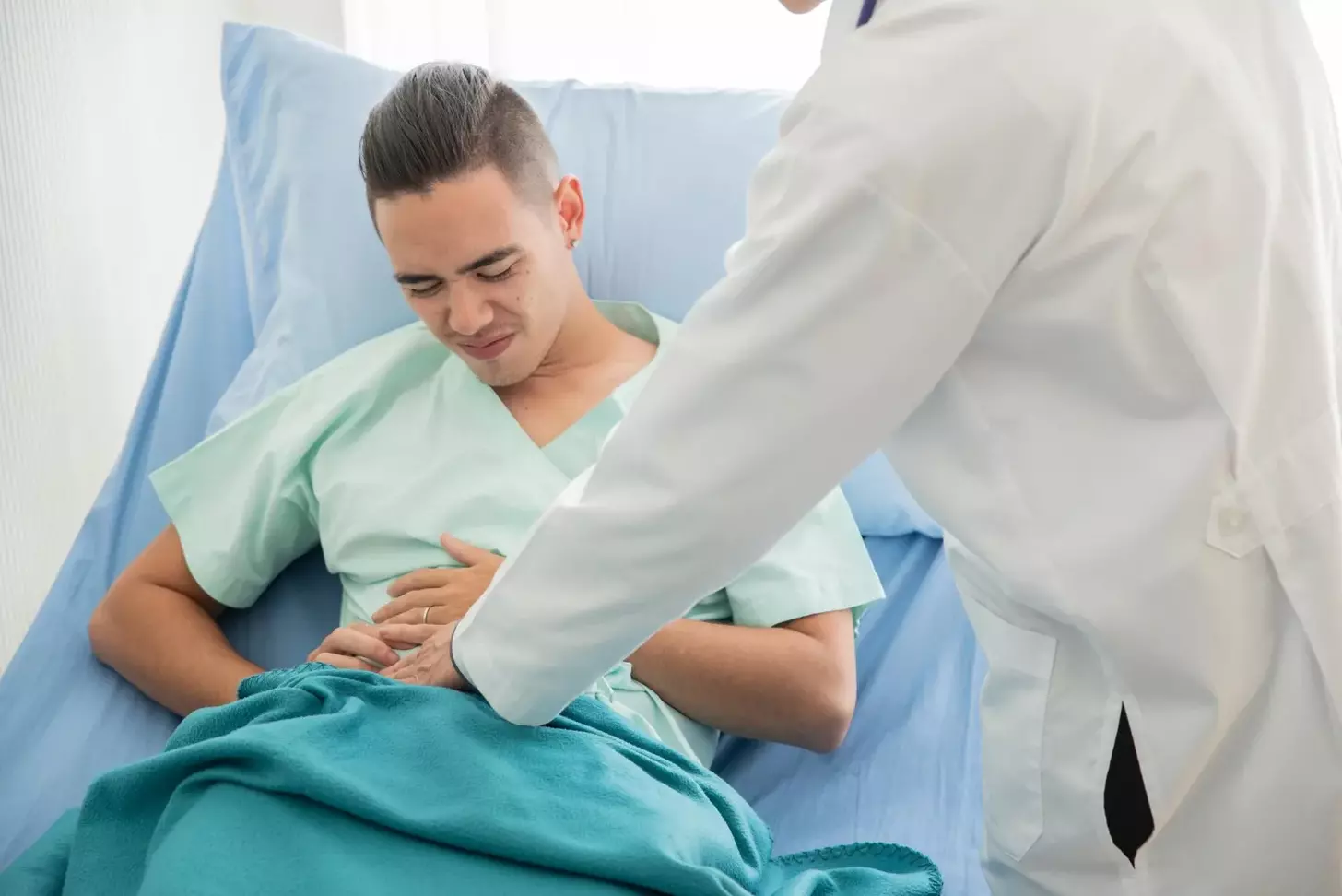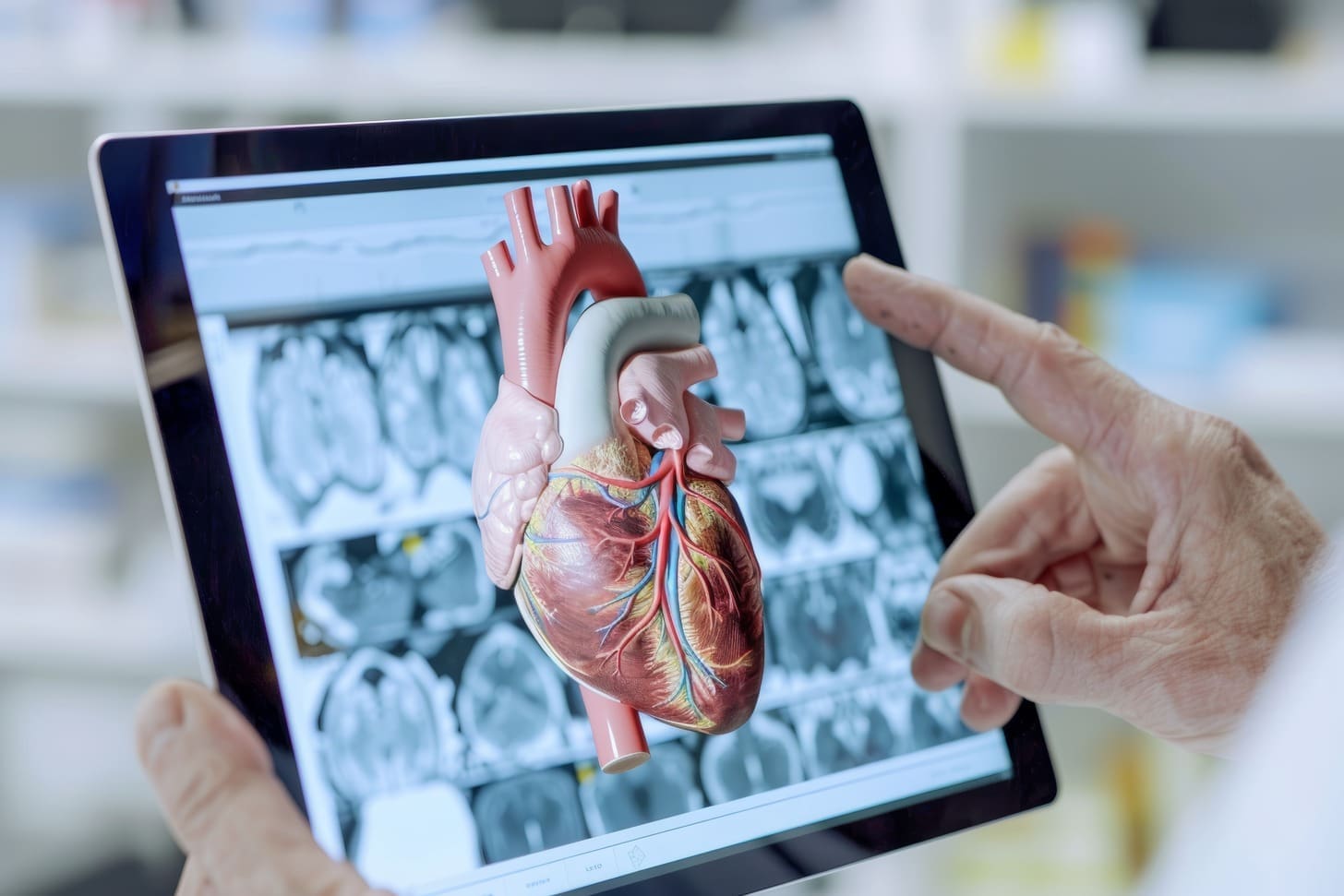Last Updated on November 27, 2025 by Bilal Hasdemir

A hysterectomy is a major surgery that removes the uterus and can cause significant hormonal changes, particularly affecting estrogen levels. After a hysterectomy, especially if the ovaries are also removed, estrogen production decreases sharply, which can lead to symptoms such as hot flashes, vaginal dryness, mood swings, brain fog, and fatigue. Even if the ovaries are left intact, the surgery can disrupt ovarian blood flow, potentially reducing estrogen levels over time and causing earlier onset of menopause. Lower estrogen levels can affect breast tissue, possibly leading to changes in breast size or firmness. Women experiencing these hormonal changes after hysterectomy should discuss hormone replacement therapy (HRT) options with their healthcare provider to manage symptoms and maintain quality
Studies show some women’s breasts might change after a hysterectomy. The link between hysterectomy and breast size is not simple. It depends on hormonal changes and how each person reacts to surgery.
Key Takeaways
- Changes in breast size can occur after a hysterectomy due to hormonal fluctuations.
- The surgery involves removing the uterus, which can affect hormone production.
- Individual responses to hysterectomy vary, influencing breast tissue differently.
- Understanding the possible effects on breast size can help women prepare for the surgery.
- Consulting a healthcare provider is essential for addressing concerns about breast changes post-hysterectomy.
Understanding Hysterectomy: Types and Procedures

A hysterectomy is a big surgery that removes the uterus. It’s key to know the different types and what they mean. This surgery is for many gynecological issues. The type chosen can affect how well you recover and change after surgery.
Partial vs. Total Hysterectomy
A partial hysterectomy takes out just the uterus, keeping the cervix. A total hysterectomy removes both the uterus and cervix. The choice depends on your health and the reason for surgery.
Hysterectomy With or Without Oophorectomy
Deciding if to remove the ovaries (oophorectomy) is also important. Taking out the ovaries can lead to surgical menopause. Leaving them in might keep hormone functions. This choice is based on your age, health history, and why you need the surgery.
Common Reasons for Hysterectomy
| Condition | Description |
| Uterine Fibroids | Non-cancerous growths in the uterus that can cause pain and heavy bleeding. |
| Endometriosis | A condition where tissue similar to the lining inside the uterus grows outside, causing pain. |
| Cancer | Cancer of the uterus, cervix, or ovaries may require a hysterectomy as part of treatment. |
The Connection Between Estrogen Levels and Breast Tissue

Breast tissue is very sensitive to estrogen. This hormone greatly affects its growth and density. It plays a big role in breast health, from puberty to pregnancy.
How Estrogen Affects Breast Development
Estrogen is key in breast development, mainly during puberty. It helps grow ducts and alveoli, which make milk. Estrogen receptors in breast tissue change with estrogen levels, affecting size and density.
Natural Estrogen Production in the Female Body
In women, estrogen mainly comes from the ovaries. It gets into the blood and reaches the breasts. Estrogen levels change throughout a woman’s life, highest during the menstrual cycle and lower with age.
The Role of Ovaries in Hormone Balance
The ovaries are vital for hormone balance, making estrogen and progesterone. These hormones control the menstrual cycle and support reproductive health. The removal or cessation of ovarian function, like after a hysterectomy, affects estrogen levels and breast tissue.
It’s important to understand how estrogen and breast tissue are connected. This helps us see how hormonal changes, like those from a hysterectomy, can affect the breasts.
Hormonal Changes Following Different Types of Hysterectomies
The effect of hysterectomy on hormones depends on whether the ovaries are kept or removed. This is key to understanding the hormonal shifts women may face after surgery.
Hormonal Impact of Hysterectomy Without Ovary Removal
If the ovaries are spared during hysterectomy, estrogen production keeps going. Yet, some women might see hormonal ups and downs. This could be due to surgery damage or changes in blood flow to the ovaries. Research shows a higher risk of ovarian failure even with ovaries left in place.
Hormonal Impact of Hysterectomy With Ovary Removal
Removing the ovaries during hysterectomy causes instant menopause. This leads to a sharp drop in estrogen levels. Women may face more severe menopause symptoms than those who go through natural menopause. The loss of estrogen affects not just the reproductive system but also bone and heart health.
Timeline of Hormonal Shifts Post-Surgery
The timing of hormonal changes after hysterectomy varies. For those without ovaries, the shift is immediate. For others, it may take months or years to settle. Key changes include:
- Immediate drop in estrogen and progesterone if ovaries are removed
- Gradual hormone decline if ovaries are spared but surgery affects them
- Menopausal symptoms may start right away or later
It’s vital to understand these changes for better health after hysterectomy.
Doctors might suggest hormone therapy or other treatments to help manage symptoms. Working closely with healthcare providers can greatly improve life after surgery.
Surgical Menopause vs. Natural Menopause
Menopause can happen naturally or through surgery. Each has its own way of starting and its health effects. Knowing these differences helps women and doctors manage symptoms and prevent long-term health problems.
Defining Surgical Menopause
Surgical menopause happens when a woman’s ovaries are removed or stop working. This causes a sudden drop in hormone levels. It’s different from natural menopause, where hormone levels slowly go down.
Surgical menopause often brings on more severe symptoms. Women may feel hot flashes, night sweats, and mood swings more intensely than those going through natural menopause.
Comparing Symptom Onset and Severity
Symptoms in surgical menopause start suddenly, while natural menopause symptoms come on gradually. This difference can affect how severe and long symptoms last.
Women with surgical menopause usually say their symptoms are more intense. This is because estrogen levels drop suddenly, causing more noticeable physical and emotional symptoms.
Long-term Health Implications
Both surgical and natural menopause can lead to health problems like osteoporosis and heart disease. But the risks and when they happen can be different.
Women who have surgical menopause at a younger age might face bigger health risks. This is because they lose ovarian function early.
In summary, while surgical and natural menopause share some traits, their differences in how symptoms start, how severe they are, and their long-term health effects are important. Understanding these differences helps women deal with this life change better.
Direct Effects of Hysterectomy on Breast Tissue
Hysterectomy can change breast tissue in many ways. These changes happen right away and can last for a long time. Each person’s experience is different.
Short-term Changes in Breast Appearance
Right after a hysterectomy, some women see changes in their breasts. These can be because of hormone shifts, like when the ovaries are taken out. Hormonal changes can cause swelling or texture changes in the breasts.
Long-term Changes in Breast Density
Over time, breast density can change after a hysterectomy. This is because of hormone level changes, mainly estrogen.
| Factor | Effect on Breast Tissue |
| Hormonal Changes | Changes in breast density and appearance |
| Age at Hysterectomy | Younger women may experience more significant hormonal changes |
| Oophorectomy | Removal of ovaries can lead to more pronounced estrogen withdrawal effects |
Factors That Influence Breast Changes
Knowing these factors can help women get ready for the changes they might see after a hysterectomy.
Can Breasts Decrease in Size After Hysterectomy?
Many women wonder if hysterectomy can change their breast size. The link between hysterectomy and breast tissue is complex. Hormonal changes may affect breast size.
Scientific Evidence and Clinical Observations
Research on this topic shows mixed results. Some studies say hysterectomy, with ovary removal, can change breast size. Estrogen is key for breast tissue, and less estrogen can change breast density and size.
Patient Experiences and Reports
Women’s experiences with breast size changes after hysterectomy vary. Some see a big drop in size, while others notice no change or even an increase. How women respond to hormonal changes after hysterectomy can differ a lot, affecting breast tissue in different ways.
- Some patients blame the sudden drop in estrogen for their breast size decrease.
- Others think weight changes or other factors not related to the surgery might have caused their breast size changes.
Differentiating Between Perception and Measurable Changes
It’s important to tell the difference between how breasts feel and actual size changes. How we feel about our breasts can be influenced by many things, like weight changes. We need to measure to see real size changes.
- Studies with precise measurements show some women’s breasts get smaller, while others don’t.
- This shows we need to look at each person’s situation and care differently.
The Impact of Ovary Removal on Breast Volume
Removing ovaries during a hysterectomy can change estrogen levels right away. This can affect breast volume. It’s a big decision that can change a woman’s body, including her breasts.
Immediate Effects of Estrogen Withdrawal
Estrogen levels drop fast after ovary removal. This can change breast tissue right away. Estrogen helps keep breasts dense and full. Without it, breasts may shrink.
Gradual Changes in Breast Composition
Without estrogen, breast tissue can change over time. It may become less dense and smaller. These changes can differ from person to person. They depend on age, health, and hormone therapy.
Individual Variation in Responses
Everyone reacts differently to estrogen withdrawal after ovary removal. Some notice big breast volume changes. Others don’t see much difference. Lifestyle, genes, and health can affect these changes.
Weight Fluctuations and Fat Distribution After Hysterectomy
Hysterectomy can change how weight and fat are distributed in the body. Many women see changes in body composition after surgery. These changes are often due to hormonal shifts and lifestyle changes.
Common Weight Changes Post-Surgery
Some women notice big weight changes after a hysterectomy. Hormonal fluctuations are a big factor. The surgery can affect hormone levels, leading to weight gain or loss.
It’s important to watch your weight closely. Adjust your diet and exercise to keep things in balance.
How Fat Redistribution Affects Breast Appearance
Fat redistribution can change how breasts look after hysterectomy. As fat moves around the body, some women see changes in breast size or density. These changes are because of fat loss or gain in the breast tissue.
Distinguishing Between Weight-Related and Hormonal Changes
It’s key to tell apart weight changes and hormonal shifts. While weight changes can affect breast size, hormones can also impact breast tissue. Knowing the cause of these changes helps women make better health choices.
Progesterone Drop and Its Effect on Breast Tissue
It’s important for women to know how progesterone affects their breasts after a hysterectomy. Progesterone is key in the female body, impacting both the uterus and breast health.
The Role of Progesterone in Breast Health
Progesterone gets the breasts ready for milk-making during pregnancy. It works with estrogen to keep the menstrual cycle in check and the breasts healthy. The balance between estrogen and progesterone is vital for avoiding breast tenderness and other symptoms from hormonal changes.
How Progesterone Levels Change After Hysterectomy
After a hysterectomy, the body might make less progesterone, which can happen if the ovaries are taken out. This drop in progesterone can change the breast’s density and size.
Balancing Estrogen and Progesterone
| Hormone | Role in Breast Health | Effect of Hysterectomy |
| Progesterone | Prepares breast tissue for milk production | Levels may decrease, affecting breast density |
| Estrogen | Regulates menstrual cycle and breast growth | Levels may decrease, specially with ovary removal |
The relationship between progesterone and estrogen is complex. Knowing their roles can help women make better health choices after a hysterectomy.
Understanding Post-Hysterectomy Estrogen Levels and Their Effects
After a hysterectomy, women often wonder about the changes in their estrogen levels. They also think about how these changes might affect their breast tissue. Estrogen is a key hormone that affects many bodily functions, including breast health.
The impact of hysterectomy on estrogen levels depends on whether the ovaries are removed during surgery.
Measuring Estrogen After Surgery
Estrogen levels can be measured through blood tests. These tests show how much hormonal change has occurred after a hysterectomy.
How Reduced Estrogen Affects Breast Tissue
Secondary Sources of Estrogen After Ovary Removal
Even after ovary removal, the body keeps making estrogen in other ways. Adipose tissue, for example, can turn androgens into estrogen.
This secondary estrogen can affect breast tissue, but at lower levels.
Understanding these changes is key for managing expectations and making informed decisions about post-hysterectomy care. By knowing how estrogen levels affect breast tissue, women can make better health choices.
There are different kinds of HRT. These include estrogen-only therapy and combined estrogen and progesterone therapy. The choice depends on if a woman has had a hysterectomy and if her ovaries were removed.
- Estrogen-only HRT is for women who have had a hysterectomy.
- Combined HRT is for women who haven’t had a hysterectomy. It helps prevent endometrial cancer.
Effects of HRT on Breast Tissue
HRT can change breast tissue. Estrogen therapy might make breasts denser and slightly larger. But, how much it changes can differ for each woman.
Risks and Benefits of HRT for Breast Health
HRT can help with menopause symptoms but has its risks and benefits for breast health. Combined HRT might raise breast cancer risk. But estrogen-only HRT’s risk is less clear.
| HRT Type | Breast Cancer Risk |
| Combined HRT | Increased risk |
| Estrogen-only HRT | Variable risk |
Women should talk to their healthcare provider about their risks and HRT’s benefits. This is important for making informed decisions.
Other Body Changes That May Accompany Breast Changes
After a hysterectomy, women may notice many physical changes. These can be due to hormonal shifts, lifestyle changes, and aging. Knowing about these changes can help women adjust better after surgery.
Skin Elasticity and Texture Changes
Lower estrogen levels can make skin less firm and cause wrinkles. Eating well and exercising regularly can help. Moisturizing and protecting the skin from sun damage are also key for skin health.
Muscle Tone Alterations
Hormonal changes and weight shifts after a hysterectomy can affect muscles. Doing resistance training exercises regularly can help keep muscles strong. Eating enough protein is also important for muscle health.
Overall Body Composition Shifts
Lower hormone levels, like estrogen, can change body composition. A healthy diet and regular physical activity can help manage these changes. It’s also vital to watch overall health and adjust lifestyle habits as needed.
Some common changes include:
- Redistribution of body fat
- Changes in skin texture and elasticity
- Alterations in muscle tone
Knowing about these changes can help women prepare and make informed health decisions after a hysterectomy.
Psychological Impact of Breast Changes After Hysterectomy
After a hysterectomy, breast changes can deeply affect a woman’s recovery. These changes can hurt her self-esteem and body image. This can lead to emotional pain.
Body Image Concerns
When breasts look or feel different, it can worry women. They might feel less confident in their looks and in their relationships.
Emotional Responses to Physical Changes
Women react differently to breast changes. Some feel sad or miss their old body. Others feel relieved or don’t mind the changes.
Coping Strategies and Support
There are ways to cope with these changes. Getting help from doctors, joining support groups, or talking to counselors can help. Taking care of oneself and focusing on positive body image can also aid in adjustment.
| Coping Strategy | Description | Benefits |
| Support Groups | Joining a group of women who have experienced similar changes | Reduces feelings of isolation, provides a community |
| Counseling | Professional guidance to address emotional responses | Helps in managing grief, anxiety, or depression |
| Self-Care | Engaging in activities that promote well-being and body positivity | Enhances self-esteem, promotes healing |
A woman who had a hysterectomy shared: “I felt like I was losing a part of myself, but with support and time, I learned to love my new body.”
“The body is not just a physical entity but a reflection of our emotional and psychological state.”
Non-Hormonal Factors That May Affect Breast Size Post-Surgery
Many non-hormonal factors can change breast size after a hysterectomy. Knowing these factors helps women prepare for and manage breast tissue changes.
Age-Related Changes
As women get older, their breast tissue naturally changes. This can include a decrease in density and size. These changes can happen faster or be more noticeable after a hysterectomy.
Lifestyle Factors
Things like diet, exercise, and smoking can affect breast size and makeup. Losing or gaining a lot of weight can change breast size. Not being active can also affect body composition, including breast tissue.
Pre-existing Medical Conditions
Some medical conditions, like thyroid issues or big weight changes, can also impact breast size. It’s key for women to talk about their health history with their doctor to understand risks.
| Factor | Potential Impact on Breast Size |
| Age | Natural decrease in breast density and size |
| Diet and Exercise | Weight loss or gain affecting breast size |
| Pre-existing Conditions | Thyroid disorders or significant weight fluctuations |
Managing Breast Changes After Hysterectomy
Managing breast changes after a hysterectomy needs a mix of medical, lifestyle, and supportive steps. Women might see changes in their breast tissue after surgery. It’s key to know the options for managing these changes.
Medical Interventions
Other medical steps might include watching for and treating health issues that could affect the breasts.
Lifestyle Adjustments
Making lifestyle changes is also key for managing breast changes after a hysterectomy. Keeping a healthy weight with a good diet and exercise can help. Also, wearing supportive bras can make breasts look better and feel more comfortable.
Supportive Garments and Products
Supportive clothes and products can add comfort and confidence for women with breast changes. Specialized bras for post-surgery comfort are very helpful. Knowing about breast care products can also help with skin or tissue changes.
When to Consult a Healthcare Provider About Breast Changes
Knowing when to see a doctor about breast changes after a hysterectomy is key. Changes can happen due to hormonal shifts and menopause after surgery. It’s important to know the signs that mean you need to see a doctor.
Concerning Symptoms That Warrant Medical Attention
Some symptoms need to be checked right away. These include:
- Persistent pain or discomfort in the breasts
- Noticeable changes in breast size or shape
- Skin thickening or dimpling
- Nipple discharge or inversion
If you notice any of these, see your doctor quickly.
Routine Monitoring and Screening
Regular checks and screenings are important for catching problems early. This includes:
- Monthly breast self-exams
- Annual mammograms as recommended by your healthcare provider
- Clinical breast exams during routine check-ups
Being proactive about your breast health can help spot issues early.
Questions to Ask Your Doctor
When talking to your doctor about breast changes, prepare your questions. Ask:
- What could be causing my breast changes?
- Are there any additional tests or screenings needed?
- What treatment options are available if a problem is detected?
Being informed and asking the right questions helps you understand your health better.
Conclusion: Understanding Your Body After Hysterectomy
After a hysterectomy, women often notice physical changes. This includes possible changes in their breasts. It’s important to understand these changes to adapt to the new body.
The link between hysterectomy and breast size is complex. Hormonal shifts and the type of surgery play big roles. Women who lose their ovaries might see bigger changes in their breasts.
Every woman’s experience after a hysterectomy is different. Things like hormone therapy, lifestyle changes, and health can affect breast changes and body adaptation.
Knowing what changes might happen after a hysterectomy helps women navigate their recovery better. This knowledge lets them make informed health choices. It helps them approach body changes with a positive and strong mindset.
FAQ
What is a hysterectomy and how does it affect the body?
A hysterectomy is a surgery to remove the uterus, sometimes the ovaries too. This can change hormone levels, affecting the body in many ways. It can change breast size and how the body looks.
How do estrogen levels impact breast tissue?
Estrogen is key in growing and shaping breast tissue. When estrogen levels change, like after a hysterectomy, it can alter breast size or density.
Can removing the ovaries during a hysterectomy affect breast size?
Yes, removing the ovaries can cause a sudden drop in estrogen. This hormonal imbalance can change breast size or density.
What is the difference between surgical menopause and natural menopause?
Surgical menopause happens when the ovaries are removed, causing hormone levels to drop right away. Natural menopause is a gradual decrease in hormone levels. Surgical menopause can cause more severe symptoms.
How does hormone replacement therapy (HRT) affect breast tissue after a hysterectomy?
HRT can help with symptoms of hormonal imbalance, including breast tissue changes. But, the type and amount of HRT can affect breast size and density. It’s important to talk to a healthcare provider about the risks and benefits.
Are there non-hormonal factors that can affect breast size after a hysterectomy?
Yes, age, lifestyle changes, and medical conditions can also affect breast size and density. These changes are not just due to hormonal shifts.
What other body changes can occur alongside breast changes after a hysterectomy?
Changes in skin, muscle tone, and body composition are common after a hysterectomy. These changes are often due to hormonal shifts.
How can I manage breast changes after a hysterectomy?
Managing breast changes can involve medical treatments, lifestyle changes, and using supportive products. It’s important to talk to a healthcare provider to find the best approach.
When should I consult a healthcare provider about breast changes after a hysterectomy?
If you notice unusual breast pain or changes, see a healthcare provider. Regular check-ups and screenings are also important for breast health.
Can weight fluctuations after a hysterectomy affect breast size?
Yes, weight changes can affect breast size. It’s important to understand if these changes are due to weight or hormonal shifts.
How does progesterone impact breast health after a hysterectomy?
Progesterone is important for breast health, and its levels can change after a hysterectomy. Keeping estrogen and progesterone levels balanced is key for breast health.
References
- Turan, A. (2024). Examining the changes in women’s lives after hysterectomy: Psychological and social perspectives. Journal of Women’s Health Research, 12(1), 45-54. Retrieved from https://pmc.ncbi.nlm.nih.gov/articles/PMC11579121/
- den Tonkelaar, I., Peeters, P. H. M., & van Noord, P. A. H. (2004). Increase in breast size after menopause: Prevalence and determinants. Maturitas, 48(1), 51-57. https://pubmed.ncbi.nlm.nih.gov/15223108/






